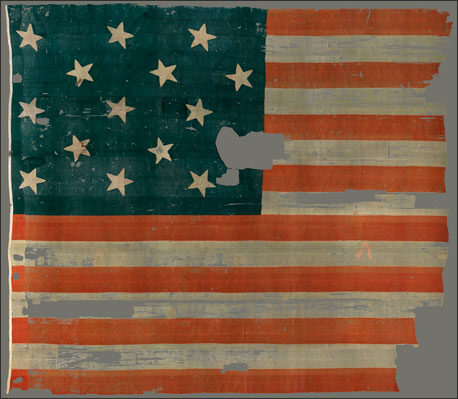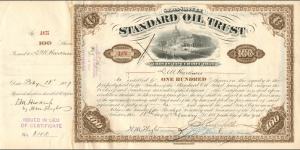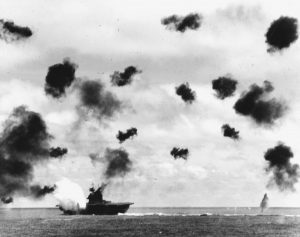Francis Scott Key was born on August 1, 1779 in Terra Rubra, Maryland. After graduating college, Key began to study law in hopes of becoming an attorney.1 Soon after, Keys got married and had eleven children and moved to Georgetown where he started his own practice.2 Key became very successful in his work as a lawyer, and for hobbies he sang for the church and wrote poems, a lot of which are still appreciated today. When the War of 1812 broke out, Key enlisted in the US army.3

Francis Scott Key was sent to a British ship to negotiate the release of certain prisoners. Upon Key’s arrival to the ship, he showed the Commodore of the ship letters from British troops that had been captured by American forces.4 The letters explained how well they were being treated and that they were not harmed in any way. After seeing this, the Commodore let their prisoner William Beanes free, but before the three American men could leave, the British troops were preparing to attack Fort McHenry, and therefore needed to keep them on the ship so that they would not be able to return back to warn the American troops.5
For over twenty-four hours the two sides, American and British, exchanged fire. The British recorded that “over eight hundred shells” were shot at the fort.6 After twenty-four hours of fighting both on land and sea, Francis Scott Key waited for the smoke to clear and saw that the American flag at Fort McHenry was still waving high. Key immediately began to write a poem on what he had witnessed that day. The poem quickly rose to fame and gained the attention of almost every single American.7
Very few people know that the poem went through different phases before becoming the American National Anthem. The original title of the poem was “The Defense of Fort McHenry.” Key later added the tune from an old drinking song called “To Anacreon in Heaven.”8 Later, Congress met to decide on a song for the nation; all songs were rejected, including “The Defense on Fort McHenry.” People that opposed the song claimed that the lyrics were too difficult to sing, it was not martial enough, and it was only about one event in all of American history.9 People who supported the song loved that the lyrics were difficult; that way only professional musicians and singers could sing it before certain important occasions.10
It was not until 1916 that the United States made the “The Star-Spangled Banner” the unofficial nation anthem. Woodrow Wilson was asked to have a “ceremonial song” for the United States, so he picked the most loved song by the people of the United States.11 But it was not until 1931 that Congress adopted the “The Star-Spangled Banner” as the official nation anthem of America. The poem was seen and adored by Americans for the patriotism it stood for and as a reminder of its past victories. This song is now sung before almost every major event in the United States to serve as a reminder of America’s victory against all odds.12
While the first stanza of the poem is widely known and sung today, few have been able to appreciate it in its entirety. Here, then, is the original poem:
O say can you see, by the dawn’s early light,
What so proudly we hail’d at the twilight’s last gleaming,
Whose broad stripes and bright stars through the perilous fight
O’er the ramparts we watch’d were so gallantly streaming?
And the rocket’s red glare, the bomb bursting in air,
Gave proof through the night that our flag was still there,
O say does that star-spangled banner yet wave
O’er the land of the free and the home of the brave?
On the shore dimly seen through the mists of the deep
Where the foe’s haughty host in dread silence reposes,
What is that which the breeze, o’er the towering steep,
As it fitfully blows, half conceals, half discloses?
Now it catches the gleam of the morning’s first beam,
In full glory reflected now shines in the stream,
‘Tis the star-spangled banner – O long may it wave
O’er the land of the free and the home of the brave!
And where is that band who so vauntingly swore,
That the havoc of war and the battle’s confusion
A home and a Country should leave us no more?
Their blood has wash’d out their foul footstep’s pollution.
No refuge could save the hireling and slave
From the terror of flight or the gloom of the grave,
And the star-spangled banner in triumph doth wave
O’er the land of the free and the home of the brave.
O thus be it ever when freemen shall stand
Between their lov’d home and the war’s desolation!
Blest with vict’ry and peace may the heav’n rescued land
Praise the power that hath made and preserv’d us a nation!
Then conquer we must, when our cause it is just,
And this be our motto – “In God is our trust,”
And the star-spangled banner in triumph shall wave
O’er the land of the free and the home of the brave.13
- War of 1812, 2002, s.v. “Key, Francis Scott.” ↵
- War of 1812, 2002, s.v. “Key, Francis Scott.” ↵
- War of 1812, 2002, s.v. “Key, Francis Scott.” ↵
- War of 1812, 2002, s.v. “Key, Francis Scott.” ↵
- UXL Encyclopedia of U.S. History, 2009, s.v. “The Star-Spangled Banner,” by Sonia Benson, Daniel E. Brannen, Jr., and Rebecca Valentine. ↵
- UXL Encyclopedia of U.S. History, 2009, s.v. “The Star-Spangled Banner,” by Sonia Benson, Daniel E. Brannen, Jr., and Rebecca Valentine. ↵
- UXL Encyclopedia of U.S. History, 2009, s.v. “The Star-Spangled Banner,” by Sonia Benson, Daniel E. Brannen, Jr., and Rebecca Valentine. ↵
- “Key, Francis Scott,” in Shaping of America, 1783-1815 Reference Library, edited by Lawrence W. Baker, Richard C. Hanes, Sharon M. Hanes, and Kelly Rudd, Vol. 2, Biographies Volume 1, 257. ↵
- “Key, Francis Scott,” in Shaping of America, 1783-1815 Reference Library, edited by Lawrence W. Baker, Richard C. Hanes, Sharon M. Hanes, and Kelly Rudd, Vol. 2, Biographies Volume 1, 258. ↵
- “Key, Francis Scott.” In Shaping of America, 1783-1815 Reference Library, edited by Lawrence W. Baker, Richard C. Hanes, Sharon M. Hanes, and Kelly Rudd, . Vol. 2, Biographies Volume 1,258. ↵
- “Key, Francis Scott.” In Shaping of America, 1783-1815 Reference Library, edited by Lawrence W. Baker, Richard C. Hanes, Sharon M. Hanes, and Kelly Rudd, Vol. 2, Biographies Volume 1,258. ↵
- UXL Encyclopedia of U.S. History, 2009 s.v. “The Star-Spangled Banner,” by Benson, Sonia, Daniel E. Brannen, Jr., and Rebecca Valentine. ↵
- Francis Scott Key, “The Star-Spangled Banner” (wording of the original handwritten manuscript, in the Museum Department of the Maryland Historical Society). ↵



101 comments
Hayden Hollinger
I really enjoyed reading this article. I love learning about things that I usually notice in everyday life, and of course this is one. I found it interesting that there was a few different versions of the song before it was made the national anthem. I find it particularly interesting to think how this song started as a poem but has now become recognised all over the world.
Marissa Gonzalez
Great research on your article! I briefly knew a little about how Francis Scott Key wrote what is now today as the “Star Spangled Banner”. However, I did not know that there were different versions and names before it became the national anthem. I found it interesting how the initial lyrics seemed too difficult and how later the national anthem was chosen according to which song favored the American people the most. It is amazing how a poem about a certain event in our history can be sung as the national anthem today. Good job!
Bailey Rider
This was a great read! It was interesting to learn the story behind the national anthem. I knew it came from a soldier but I never knew the whole story. It’s amazing that it started off as a poem and has now become the song we know and love to hear at football games. It’s so much longer than I thought it was too. Thanks for the cool article!
Alyssa Vela
I never thought there was much to look into when it comes to the National Anthem. It wasn’t very surprising to me that our anthem was originally a poem, but I think it’s amazing how it went through so many changes. The overall information was great, you transitioned from the beginning very well, which made understanding so much information a lot easier.
Faisal Alqarni
Hello Luke, I never knew the story behind the American national anthem even though I have heard it been sang many times before on several important occasions since I came to America, with Beyonce’s inauguration performance in 2013 really standing out for me. To learn that it was inspired by a true event, one of resilience and that speaks of the persevering spirit of America only gives it more meaning to me now.
Briana Bustamante
This was such a good article to read! I have always wondered who created the national anthem, but never looked it up. How awesome that Scott Key wrote this as a poem, but then it was later published as a song. Your article was such an easy and informative read. I really like how you started with a little background information about Scott Key, and then transitioned into the creation and reason for the star spangled banner. Over all I really enjoyed reading your article!
Natalia Zuniga
Great job!I can tell you took a lot of time and did a lot of research for this article! I alway knew about the spangled star banner but never know much about it besides the basic, so it was great to understand it better. The photo of the flag from Fort McHenry great and caught my attention because of its old-timey theme, as well as your photos of the portrait of Francis Scott Key. Overall great article!
Lianna Ybarra
Really good article! You went gave us some background information then got into the story of how the Star Spangled Banner came to be. I like how you gave history to the event of how it came to be. I feel like most people, including me, don’t know how the song came to be written. Although it is our national anthem, I didn’t know that the song was much longer than most people know or sing. I really liked how you put the entire song in your article because I didn’t know those last parts!
Alyssa Valdez
I really enjoyed reading your article, it was very well organized and very interesting. I can tell you put a lot of time and effort into your research. I have to say, I am surprised that the national anthem started off as a poem and it’s also surprising that it went into through so many changes before it actually came to be what it is today.
Ruben Trevino
It’s amazing to me how the song morphed from a poem and then went through other variations and changes before coming to be known as our national anthem.